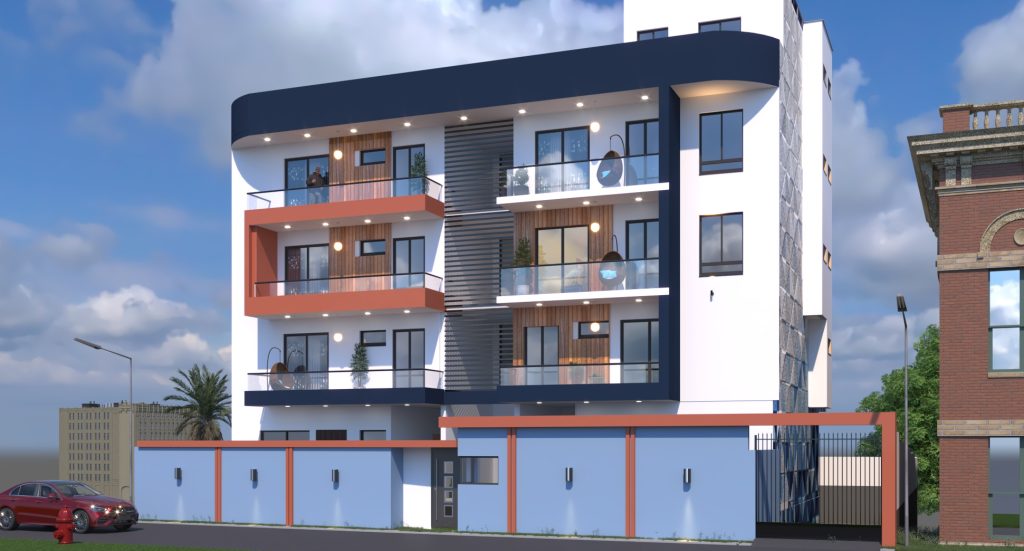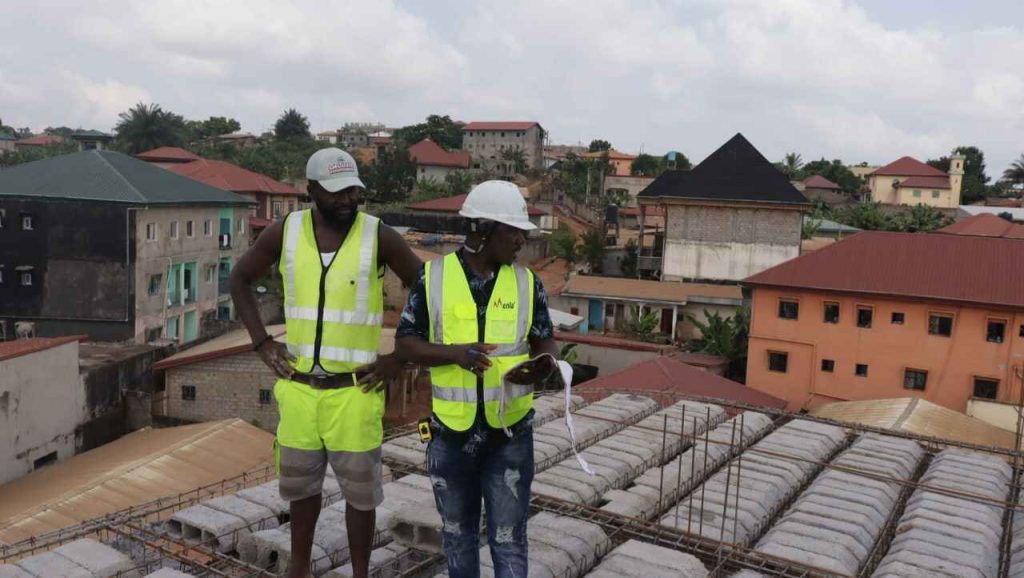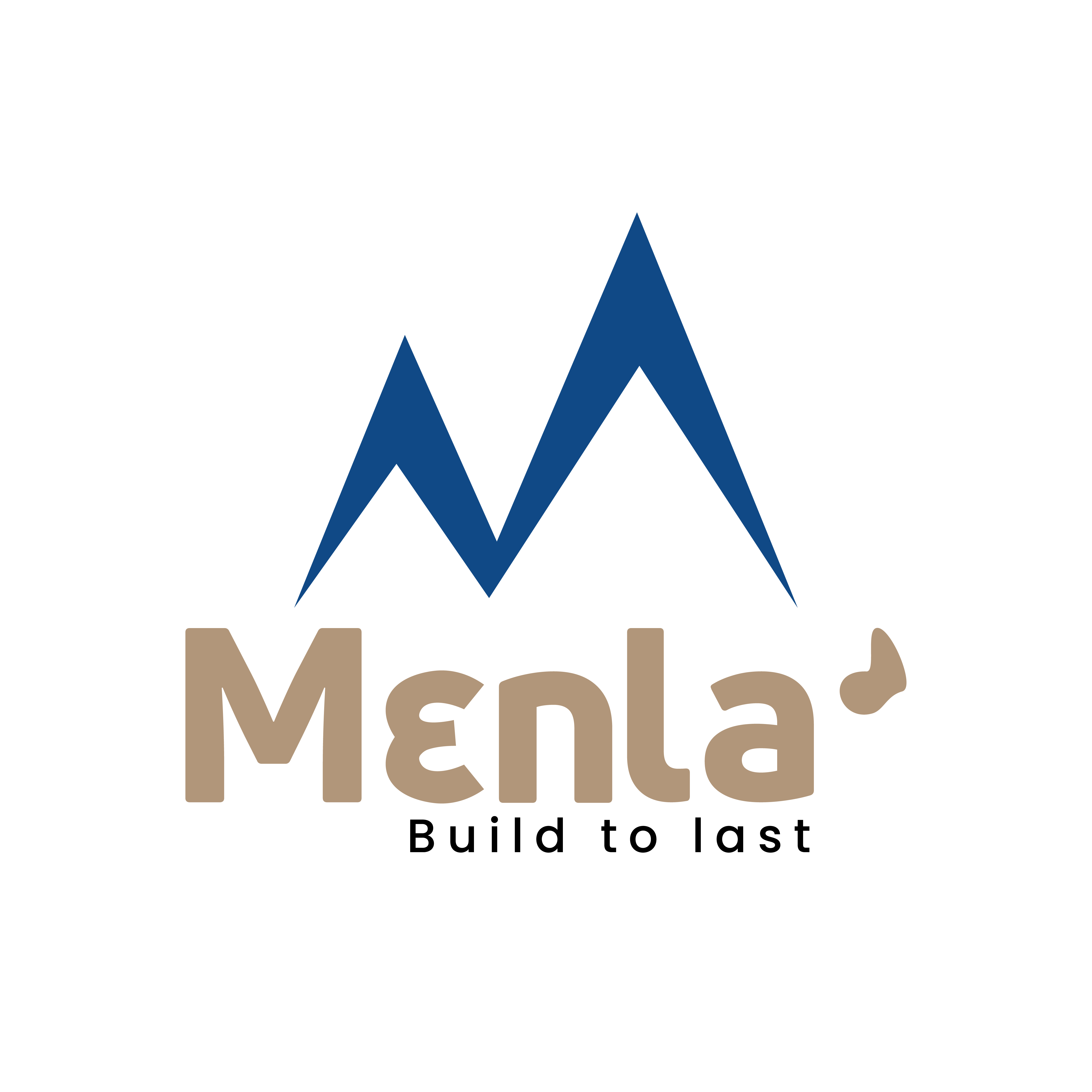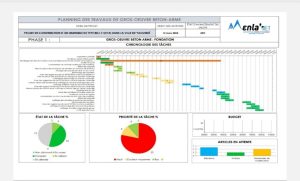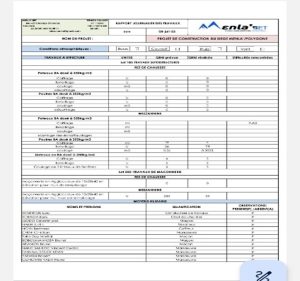- Home /
- Project Management:
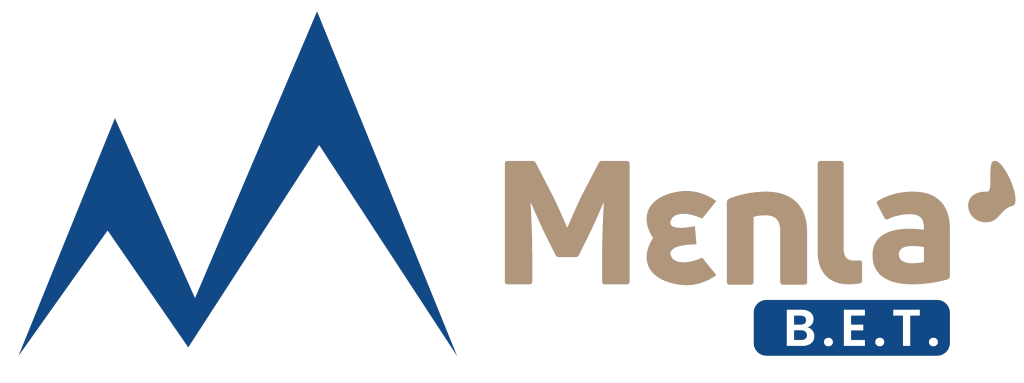
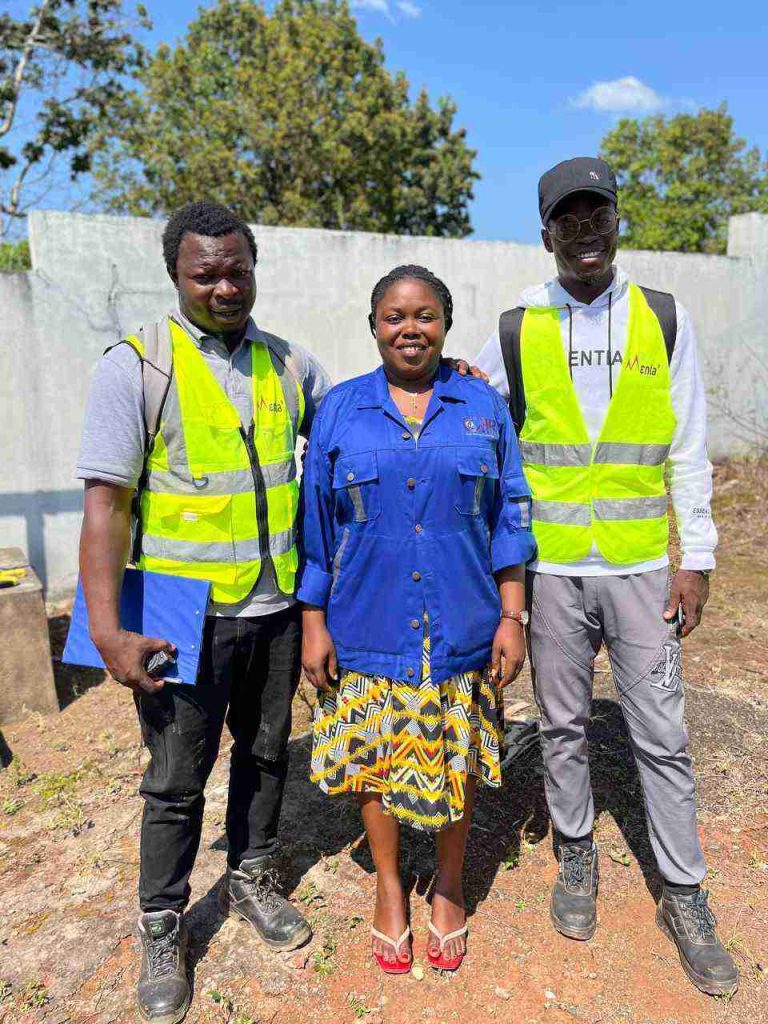
Project Management and Project Supervision
Every construction project is structured around several essential phases – from the initial study to completion, including monitoring and support until the closure of the site. At Menla’ Sarl, we make every effort to support our clients at each stage and ensure the success of their projects through rigorous and professional management.
At Menla’ Sarl, we understand that every construction project is a unique journey that unfolds in several essential phases:
- Study Phase
- Execution Phase
- Monitoring and Support Phase
- Closure Phase
THE OBJECTIVES OF THE PROJECT MANAGEMENT DEPARTMENT
Our main goal is to ensure the completion of high-quality projects that meet standards and requirements, while adhering to the specified timelines and budgets. We are committed to providing our clients with a seamless experience, focused on satisfaction and performance.
Our Values
Exemplarity, collaboration, expertise, rigor, proactivity, and transparent communication are the values that define MENLA’ and all its components.
Our Missions
In general, our mission is: To ensure the coordination and supervision of all technical and administrative aspects of projects from start to finish.
OUR SERVICES
Menla’ firm, through its project management department, offers a variety of services and prestations, including:
THE DEFINITION OF CONTRACTS
Drafting of contracts, monitoring contractual obligations, and managing disputes;
TEAM MANAGEMENT
We ensure the coordination of execution and control teams;
Project Planning and Monitoring
We ensure the development of schedules, monitoring of deadlines, and risk management;
BUDGET AND COST MANAGEMENT
We ensure in this aspect the control of expenses, resource optimization, and management of variations;
QUALITY AND SAFETY
We ensure the control of executed works, compliance with safety standards, and the application of internal procedures.
SKILLS AND EXPERTISE
The success of our projects relies on the expertise of our engineers, who combine technical and interpersonal skills.
The Skills
The project management department of Menla’ has a team of engineers with diverse skills, including, but not limited to:
- TECHNICAL SKILLS: proficiency in design, modeling, sizing software, and especially in planning.
- INTERPERSONAL SKILLS: We have excellent communication, negotiation, and teamwork skills.
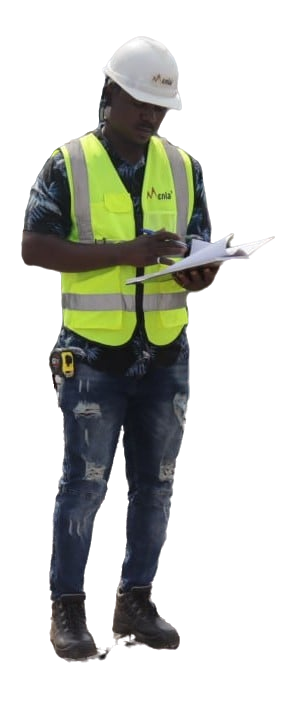
Expertises
Management of various civil engineering projects; Audits, diagnostics, and assessments of all types of buildings (ERP, Residential, IGH, etc.); Assistance to project owners (MOA) and project management (MOE); Support for clients and companies in the execution of works; Design of dashboard models; Use of project management software such as MS PROJECT, EXCEL, SMARTSHEET, POWERPOINT, etc.
OUR RESOURCES AND TOOLS
The project management department of Menla’ BET has a variety of resources, including human resources, material resources, and tools that enable it to work calmly and professionally.
1.Human Resources
The project management department of Menla’ BET provides project developers with a team of young, dynamic, and dedicated engineers, composed as follows:
|
Nº
|
First and last names
|
Qualifications
|
|---|---|---|
|
01
|
BIKELE Honoré Didier
|
Civil Engineering Engineer; certified in Project Management.
|
|
02
|
ZOSSIE Philippe
|
Design Civil Engineering Engineer.
|
|
03
|
FANDJA Davy
|
Architect
|
|
04
|
TATSINKOU Loïc
|
Civil Engineering Design Engineer.
|
|
05
|
NGOUMEZONG RAMEZE
|
MIP Engineer (Master of Industrial Projects).
|
|
06
|
TOLOKO BELO
|
Electrical Engineer.
|
|
07
|
KAMSSEU Jospin
|
IS Engineer (Information Systems Engineer).
|
2.Material Resources
To be more efficient in our various interventions in the field and even in the design office, a certain amount of equipment is made available for the control mission. This equipment is classified into 3 categories as follows:
- Rolling equipment
- Technical equipment
- Project management tools
1. Rolling equipment
|
Nº
|
Designations
|
Quantities
|
Observations
|
|---|---|---|---|
|
01
|
Black automatic RAV4 liaison vehicle.
|
01
|

|
|
02
|
White 4x4 pickup liaison vehicle.
|
01
|

|
2. Technical equipment
This refers to the equipment used on the construction site to take measurements, perform quality control, verify compliance, and conduct tests on certain materials.
|
Nº
|
Designations
|
Quantities
|
Observations
|
|---|---|---|---|
|
01
|
TOTAL brand laser meter.
|
01
|
|
|
02
|
GPS (Global Positioning System).
|
01
|
|
|
03
|
Measuring Tape
|
01
|
|
|
03
|
Abrams cone test equipment (cones and accessories).
|
01
|
|
|
05
|
Complete heavy dynamic penetrometer.
|
01
|
3. Project Management Tools
|
Nº
|
Designations
|
Quantities
|
Observations
|
|---|---|---|---|
|
01
|
Project Management Software: MS PROJECT, EXCEL, POWERPOINT, etc.
|
01
|
|
|
02
|
Physical project management documents: THE MEETING MINUTES; THE WORK EXECUTION SCHEDULES, THE PROJECT MANAGEMENT DASHBOARDS, THE MONTHLY SITE REPORTS.
|
01
|

|
|
03
|
Architectural design software: Autocad, Revit
|
01
|
|
|
04
|
Design software: Robot Structure, Cypecad, DIALUX....
|
01
|
|
|
05
|
Interior and exterior design software: 3DS MAX, D5 RENDER, PHOTOSHOP.
|
01
|
|
Why trust us?
Trusting Menla’ for monitoring and support in your projects guarantees quality service, which ensures the success of your construction project in advance. These key points distinguish us from other organizations:
Experience:
We have been working for over a year and have been involved in complex projects, which has allowed us to gain solid experience in the field.
Expertise:
We provide our clients with experienced engineers in the construction field and experts in project management and administration.
METHODOLOGY AND PROCESS
Time management is a crucial aspect to ensure the success of a project within the allocated time and budget. To achieve this, here are some methods and processes we use to effectively manage deadlines:
- DETAILED TASK PLANNING: This involves:
- Clear definition of tasks:
Each task is precisely defined, including the expected deliverables, the necessary resources, and the dependencies with other tasks.
- Establishment of a realistic schedule (site diary).
Our site diary takes into account the constraints of the site (weather, material availability, etc.) and the available resources.
- Use of project management software.
We use software such as MS PROJECT, SMARTSHEET, and EXCEL to plan tasks, track project progress, and alert teams of upcoming deadlines.
REGULAR MONITORING AND COMMUNICATION
The monitoring of the works is done through:
- Site visits: We conduct regular site visits on the projects we are overseeing, averaging three times a week, which allows us to intervene effectively in the execution of tasks.
-
- Technical and coordination meetings.
At the beginning of each work week, we organize technical meetings with all parties involved in the project. These meetings allow us to check the progress of tasks, identify potential obstacles, and adjust the schedule if necessary. We also hold coordination meetings with the company to ensure they understand the plans when they encounter difficulties at certain points or when modifications have been made to the project’s graphical documents. At the end of each meeting, we prepare an accurate report of everything discussed, which we make available to the project owner in the project forum.
- Transparent communication.
An open and honest communication between the company, the project owner, and us is established through correspondence and a WhatsApp forum created specifically to serve as a channel to avoid surprises and delays.
- Progress reports.
We send a progress report every evening after each workday in the project’s WhatsApp forum, and a monthly report is prepared at the end of each month. This report is written in as many copies as there are parties involved. The reports include: achievements, encountered issues, recommended solutions, and future projections. They allow the project owner to have oversight over the project and anticipate potential problems.
RISK MANAGEMENT
It is done through:
- The identification of potential risks:
Before the project begins, we carry out an identification of potential risks that could affect the deadlines (e.g., delivery delays, weather conditions…).
- The planning of mitigation measures.
For each identified risk, we implement mitigation measures to minimize its impact on the project.
- The monitoring of risks
It is important for us to monitor the evolution of risks and adapt mitigation measures based on changing circumstances in order to avoid being caught off guard.
- CONTROL AND ADAPTATION: Control and adaptation are carried out through:
- The use of dashboards.
Dashboards and key performance indicators (KPIs) allow us to track the progress of tasks and identify areas that require special attention.
- The analysis of deviations allows us to compare the planned progress with the actual progress and to identify any discrepancies. This helps in determining corrective actions if necessary.
By comparing the actual progress with the planned schedule, we are able to identify discrepancies and adjust the timelines or resources accordingly.
- Flexibility and adaptability.
We have always remained flexible and know how to adapt smoothly to changing situations. The initial plans are revised and adjusted when necessary to ensure the success of the project.
- PARTIAL RECEPTIONS DURING THE EXECUTION OF WORKS
We regularly carry out partial receptions of the work and tasks. These receptions allow us to verify and approve specific parts or stages of the work before the final delivery of the project. This reassures our clients that the work is progressing according to the agreed-upon specifications and helps detect any issues or defects earlier in the process, making it easier to implement necessary corrections.
THE DIFFERENT PROJECT WE SUPPORT
01
MINI SPORTS COMPLEX
FOLLOW-UP AND SUPPORT OF A MINI SPORTS COMPLEX
YAOUNDE - OLEMBE
Project Description: The construction project for the mini sports complex is a truly modern infrastructure that includes a set of facilities dedicated to sports and complementary activities (swimming pool, infirmary, etc.) for a perfect stay within the center.
REGULAR MONITORING OF THE PROJECT THROUGH SITE VISITS
As the main contractor, we oversaw the project from geotechnical studies to implementation.
We have provided the project owner with a progress report on the works. As of today, the execution works are currently suspended, and the project is 35% complete compared to the overall project scope.
We held weekly meetings every Monday morning and consistently sent a meeting report to the project owner.
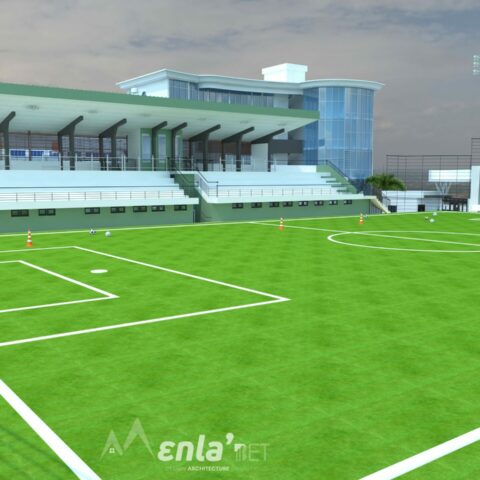

Installation of the Steel Framework Under the Supervision of the MENLA BET Control Team
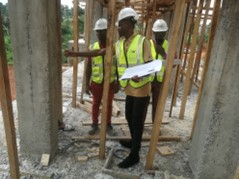
Control of the Restaurant Wiring
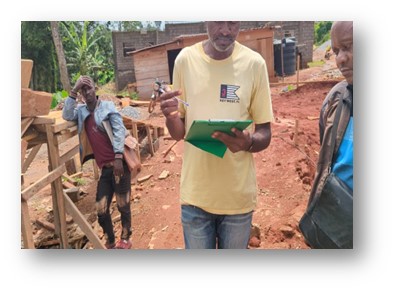
Partial Reception of the Foundation
02
Menla’ Sarl
VI.2. PROJECT FOLLOW-UP OF THE CONSTRUCTION OF THE HEADQUARTERS OF « MENLA' SARL»
YAOUNDE - TSINGA VILLAGE
Project Description: The Menla’ Sarl headquarters construction project comprises two distinct buildings: the first building houses staff facilities and an industrial storage area, while the second building features offices and a large electromechanical manufacturing workshop. The project’s architectural design is marked by a modern and sleek aesthetic.
REGULAR PROJECT MONITORING THROUGH SITE VISITS
As the main contractor, we oversaw the project from geotechnical studies to implementation.
We have provided the project owner with a progress report on the works. As of today, the execution works are currently suspended, and the progress stands at 18% of the overall project.
We held weekly meetings every Monday morning and consistently sent a meeting report to the project owner.
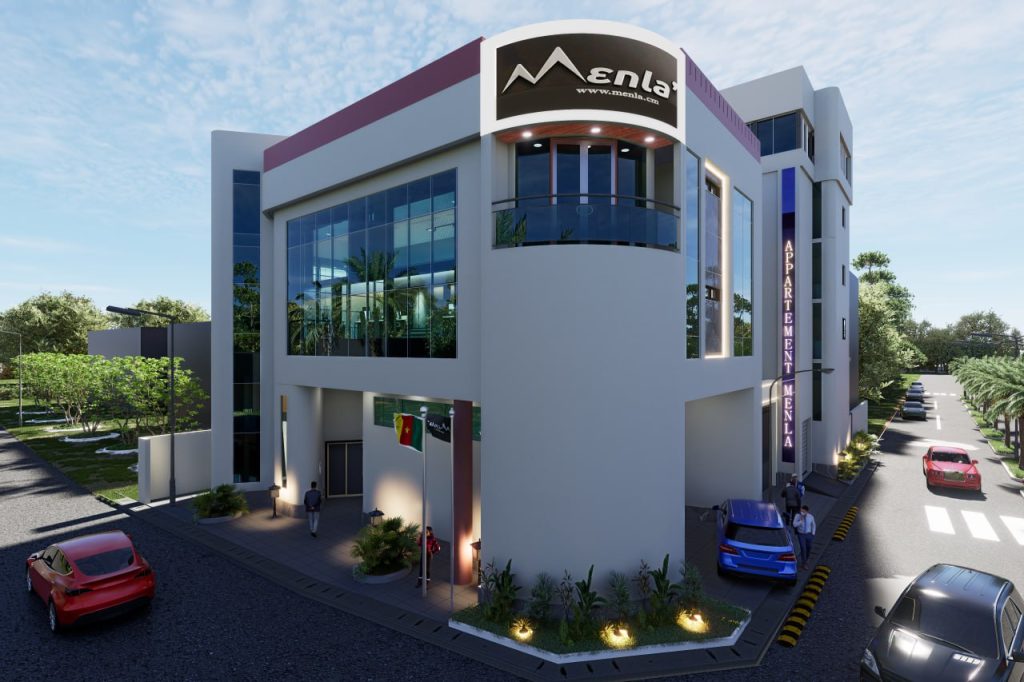
03
BUILDING TYPE RDJ + (R+3)
MONITORING AND SUPPORT FOR THE CONSTRUCTION OF A BUILDING TYPE RDJ + (R+3)
YAOUNDE - TSINGA VILLAGE
Project Description: The project was initiated and led by a client who entrusted Menla’ with the architectural and technical studies, as well as the supervision of the construction works for this building. It’s a high-end residential project featuring advanced technology and special comfort features designed to enhance the well-being of future occupants of this architectural gem.
REGULAR MONITORING AND SUPPORT
As part of this project, we play the role of construction manager through the support of the company in the execution of its tasks.
We also play the role of technical controller as part of our quality control mission.
We held meetings every Monday morning and sent a report to the project owner after each meeting. We also conducted partial inspections at each stage of the building before pouring each slab and signed an acceptance report in as many copies as there were parties after each inspection.
